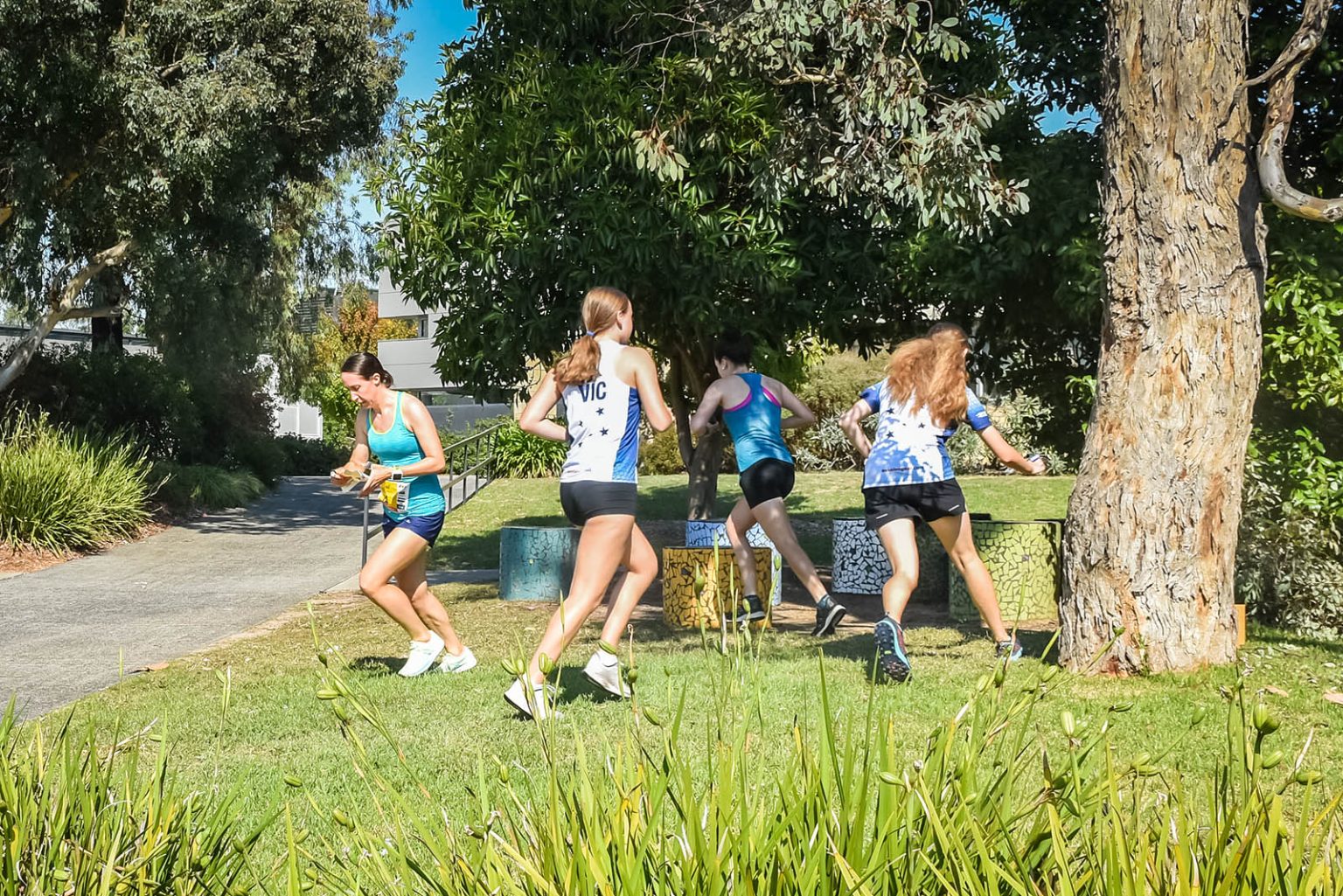Sprint orienteering events take place in urban areas such as campuses and parks areas across Australia. These events are a great way to get out an experience the great Australian outdoors in your town or city. They take place all year round. In summer they can be earlier or later in the day
Sprint orienteering is using a map to navigate around a course through a series of control points within urban based environments. Courses often have lots of control points. Frequent changes of direction. and route choices between control points are a feature. The navigation is often not difficult at walking pace but if you are running hard, it’s a challenge. A compass may help to orientate your map in the right direction.
It usually takes 12-15 minutes to complete a course, depending on your choice. Most courses are a line format. You must visit all the control points on your course in a set order, in the fastest possible time. Some events have a score format. This is where you can visit controls in any order, but you must return to the finish within a certain time. Course lengths are about 2 km to 3.5 km, if you choose the best route!
Most sprint orienteering events use an electronic timing system named “Sportident”. This records your time though each control point and your total time. You can compare the time it took you to get to each control with others on your course.
Head on over to the What is Sprint Orienteering page to find out more about this type of orienteering.
